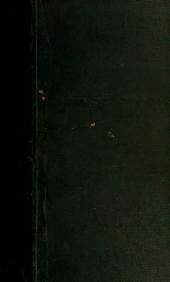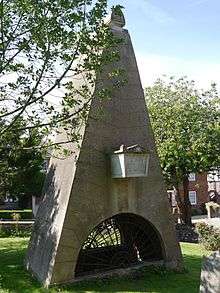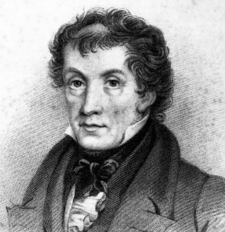John Claudius Loudon
| John Claudius Loudon | |
|---|---|
|
John Claudius Loudon | |
| Born |
8 April 1783 Cambuslang, Lanarkshire, Scotland |
| Died |
December 14, 1843 (aged 60) 3 Porchester Terrace, London, England |
| Residence | London, England |
| Nationality | Scottish |
| Alma mater | University of Edinburgh |
| Spouse |
Jane Webb (m. 1830–1843, his death) |
John Claudius Loudon (8 April 1783 – 14 December 1843) was a Scottish botanist, garden designer and cemetery designer, author and garden magazine editor. He was the first to use the term arboretum in writing to refer to a garden of plants, especially trees, collected for the purpose of scientific study.[1]
Biography
Loudon was born in Cambuslang, Lanarkshire, Scotland to a respectable farmer. Therefore as he was growing up, he developed a practical knowledge of plants and farming. As a young man, Loudon studied biology, botany and agriculture at the University of Edinburgh. When working on the layout of farms in South Scotland, he described himself as a landscape planner. This was a time when open field land was being converted from run rig with 'ferm touns' to the landscape of enclosure, which now dominates British agriculture.
Loudon developed a limp as a young man, and later became crippled with arthritis. He undertook a second Grand Tour of Europe and also visited the Near East.[2] In 1826, crippled by rheumatism and arthritis, he had to endure an amputation at his right shoulder after a botched operation to correct a broken arm. He learnt to write and draw with his left arm and hired a draughtsman to prepare his plans.[3] At the same time he cured himself of an opium habit that had been keeping the pain at bay.
In 1830 when Loudon was 47 years old, he asked a friend to invite the author of The Mummy!: Or a Tale of the Twenty-Second Century to lunch. He had recently reviewed and admired the inventions in this novel in an article published in his Gardener's Magazine. Set in 2126 AD, it is an early example of science fiction. England has become an absolute monarchy and it features an early Internet, espresso machines, and air-conditioning. The author was Jane Webb who, having been left penniless at 17 by the death of her father, had turned to writing as a profession. She had published the book anonymously. They married seven months later and had a daughter Agnes.
Design of the municipal cemetery at Southampton was Loudon's final project. Despite advanced lung cancer, he corrected the final proofs for his latest encyclopaedia. He traveled to Bath to inspect the site for another cemetery; and then to Oxford to see a client. On his return to London, his doctor told him that he was dying; he died, penniless, in the arms of his wife in December 1843. He is buried in Kensal Green Cemetery.[4]
Work
Horticultural work

Around 1803, Loudon published an article entitled Observations on Laying out the Public Spaces in London. It recommended the introduction of lighter trees rather than those with dense canopies. Loudon was attacked by rheumatic fever in 1806 which left him crippled, but this illness did not affect his writing. As his condition deteriorated over time, Loudon was forced to use the services of a draughtsman and other aids.
Beginning in 1808, Loudon was employed by George Frederick Stratton to landscape and farm his property, Tew Park, where he was able to set up a school for young men to be instructed in theory of farming and modes of cultivating the soil. Loudon's design was a model of efficiency and convenience reflected in elegance and refinement. In conjunction with the goals of diffusing agricultural knowledge, Loudon published a pamphlet entitled The Utility of Agricultural Knowledge to the Sons of the Landed Proprietors of Great Britain, &c., by a Scotch Farmer and Land-Agent.
After traveling through Europe from 1813 to 1814, Loudon began to focus on the improvement of the construction of greenhouses and other agricultural systems. He ultimately developed a design for hinged surfaces that could be adjusted depending on the angle of the sun. Loudon also developed plans for industrial worker housing and solar heating systems. In 1815, he was elected a corresponding member of the Royal Swedish Academy of Sciences.
Loudon established himself as a city planner, decades before Frederick Law Olmsted and others began to work. His vision for the possibility of long term planning for London's green spaces was illustrated within his work, Hints for Breathing Places for Metropolis published in 1829. He envisioned city growth being carefully shaped and circulation influenced by the inclusion of green belts.
In 1832, Loudon established the design theory entitled Gardenesque. In this style, attention was given to the individual plant and placement in the best conditions for them to grow to their potential. 19th century thought was punctuated by the belief that gardens should not mimic nature, so Gardenesque offered a solution by introducing exotics into gardens and basing layouts on abstract shapes.
Loudon was instrumental in the adoption of the term landscape architecture by the modern profession. He took up the term from Gilbert Laing Meason and gave it publicity in his Encyclopedias and in his 1840 book on the Landscape Gardening and Landscape Architecture of the Late Humphry Repton.
Publications

Loudon was a prolific horticultural and landscape design writer. Through his publications, he hoped to spread his ideals of the creation of common space and the improvement of city planning and develop an awareness and interest in agriculture and horticulture. Through his magazines and works, he was able to communicate with lay folk as well as other professionals.
His first published work was An Encyclopædia of Gardening in 1822. After its success Loudon published The Encyclopedia of Agriculture in 1825. He founded the Gardener's Magazine, the first periodical devoted solely to horticulture, in 1826. A short time later, he commenced the Magazine of Natural History in 1828.
Perhaps the most significant of these, certainly the most time-consuming and costly, was Arboretum et Fruticetum Britannicum. This work was published in three formats: with the plates entirely uncoloured, with botanical details hand-coloured, and fully hand-coloured. Work began in 1830 and it was first issued in sixty-three monthly parts from January 1835 to July 1838. It presented: an exhaustive account of all the trees and shrubs growing in Great Britain and their history; notes on remarkable examples growing in individual gardens; drawings of leaves, twigs, fruits, and the shapes of leafless trees; and entire portraits of trees in their young and mature state. All were drawn from life, many being from the parkland grounds of Syon House, one of the homes of the Duke of Northumberland to whom the work was dedicated, or from Loddiges' arboretum. "It was on the collection maintained by this firm more than any other that J. C. Loudon relied for living material in the preparation of his great work" W. J. Bean notes, in Trees and Shrubs Hardy in the British Isles. The publication also ruined him financially, as he ended up with many unsold copies of the eight-volume work and went deep into debt.[1]

His work on cemeteries also was significant. Churchyards were becoming full, especially in urban areas, and new cemeteries were being opened by private enterprises. Loudon designed only three cemeteries (Bath Abbey Cemetery, Histon Road Cemetery, Cambridge, and Southampton Old Cemetery where the design was rejected)[5] but his writing was a major influence on other designers and architects of the period.
An unusual creation by Loudon is the memorial to his parents, which stands in the grounds of St John the Baptist, Pinner's parish church. It is in the form of a stone wedge, with a fake stone sarcophagus within. It has been Grade II listed since 1983.[6]
Loudon thought that public improvements should be undertaken in a democratic fashion and in a comprehensive and reasonable manner, not sporadically by the benevolence of the wealthy. In 1839, he was commissioned to design the Arboretum at Derby. In his commissions, Loudon displayed the principles that he advocated in his writings; he took into account the general public, aiming to create a space where the classes could mingle easily as well as creating community pride. Plantings were labelled extensively. Loudon's design for the Derby Arboretum paralleled the Loddiges arboretum at Abney Park and served as inspiration for the Royal Botanical Gardens at Kew.
Prominent designs by Loudon
- Birmingham Botanical Gardens, Birmingham
- Brompton Cemetery, London
- Derby Arboretum, Derby
- Harewood House, West Yorkshire
- Bath Abbey Cemetery, Bath
- Histon Road Cemetery, Cambridge
- Ditchley, Oxfordshire
- Stradsett Hall, Norfolk
- Southampton Old Cemetery, Southampton
- Loudon Memorial, St John the Baptist, Pinner, London
Designed by others in Loudon's 'Gardenesque' style:
- Abney Park Cemetery, London – designed by George Loddiges and William Hosking in 1840[8]
- City of London Cemetery and Crematorium, laid out in 1848 according to On the Laying Out, Planting and managing of Cemeteries.
Publications
Loudon's publications include the books:
- 1806. A treatise on forming, improving, and managing country residences, Vol. I, Vol. II
- 1822. An Encyclopædia of Gardening
- 1824. The green-house companion
- 1825. The Encyclopedia of Agriculture Vol I., Vol II.; 7th edition, 1872
- 1828. The Encyclopedia of Plants, with John Lindley
- 1826. Hortus Britannicus (1830) (not to be confused with Sweet's Hortus Britannicus)
- 1834. The Encyclopedia of Cottage, Farm, Villa Architecture
- 1838. Arboretum et Fruticetum Britannicum
- 1838. Suburban Gardener
- 1842. The Encyclopedia of Trees and Shrubs
- 1843. On the Laying Out, Planting and managing of Cemeteries
- Magazines
- 1826– Gardener's Magazine
- 1828– Magazine of Natural History
- About John Claudius Loudon
- Encyclopædia Britannica (2012) John Claudius Loudon
- Dumbarton Oaks (1980) John Claudius Loudon and the early nineteenth century in Great Britain. Dumbarton Oaks Trustees for Harvard University
- Elizabeth B. Rogers (2001). Landscape Design: A Cultural and Architecture History. New York: Harry N. Abrams, Inc.
References
- 1 2 Wilson, Matthew (2 April 2016), "New branch of gardening", Financial Times, pp. 18–19
- ↑ Louise Wickham (2007) John Claudius Loudon – father of the English garden on parksandgardens.ac.uk. Retrieved 8 December 2012
- ↑ "The Britiannia" (1844). "Obituary J C Loudon, Esq., F.L.S.". Annals and Magazine of Natural History. 13: 78–80. Retrieved 19 January 2016.
- ↑ A.W. Skempton (2002) A Biographical Dictionary of Civil Engineers in Great Britain. p. 413
- ↑ Melanie Louise Simo (1988) Loudon and the Landscape, p. 283.
- ↑ Cherry, Bridget, and Pevsner, Nikolaus. Pevsner's Architectural Guide: London 3: North West (1991 ed.). Penguin Books. pp. 283–4.
- ↑ IPNI. Loudon.
- ↑ This design had elements of 'Gardenesque', and most particularly an arboretum Loudon spoke highly of.
External links
| Wikimedia Commons has media related to John Claudius Loudon. |
- John Claudius Loudon on gardenvisit.com
